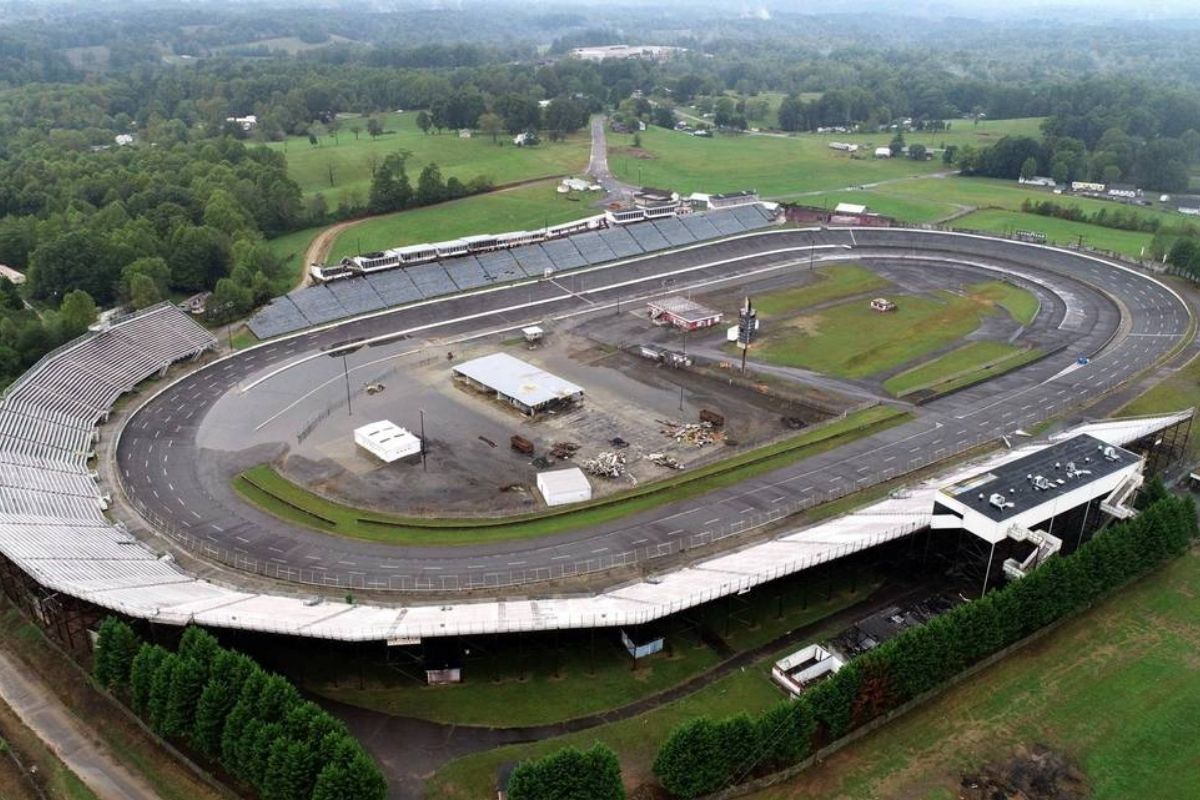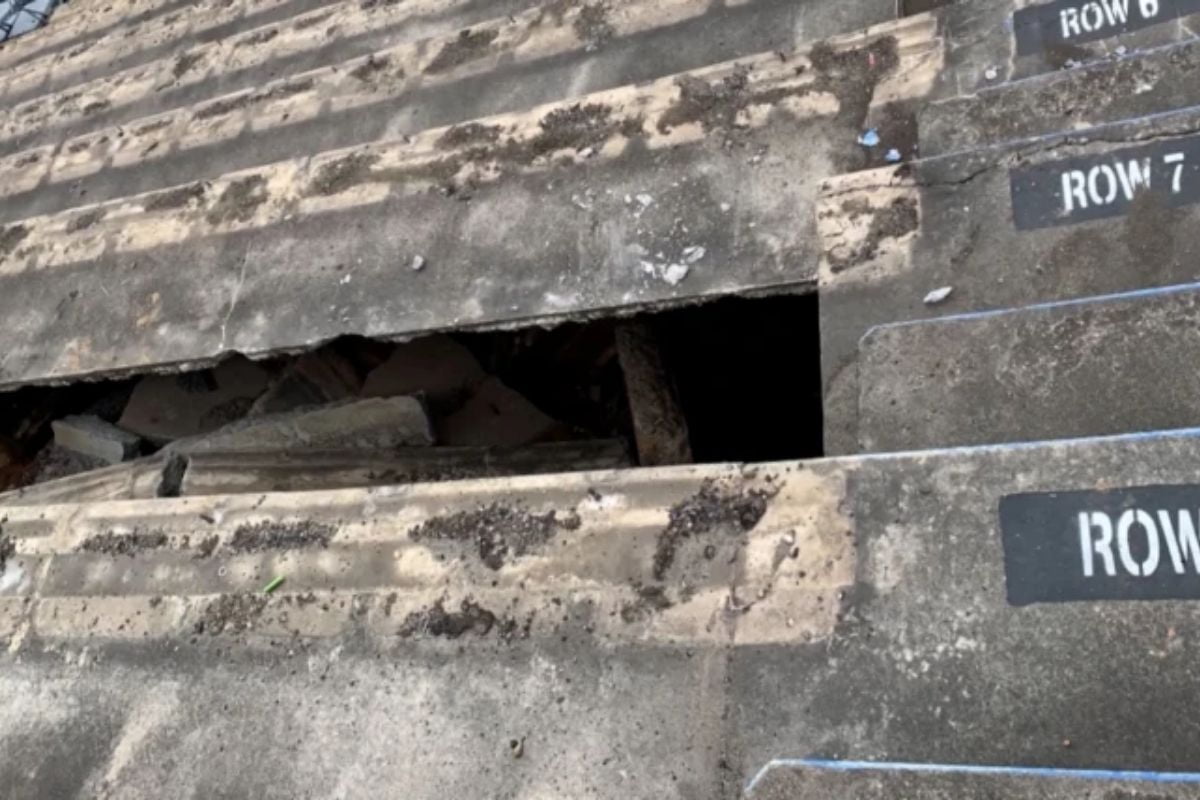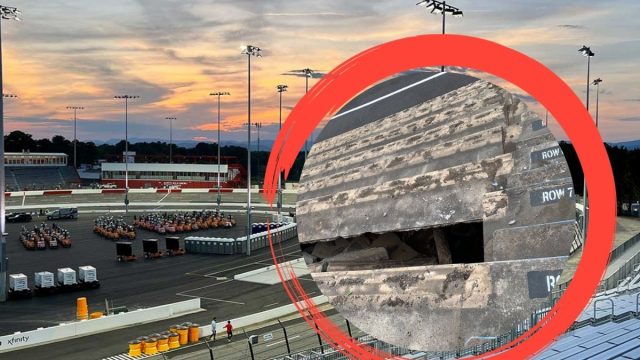Moonshine Cave Discovered: The discovery of a moonshine cave under North Wilkesboro Speedway exposes NASCAR’s deep ties to bootlegging and Prohibition. Legends like Junior Johnson shifted from moonshine running to racing. The cave hints at a hidden operation from a bygone era, shedding light on NASCAR’s roots. Further investigation promises to reveal more on NASCAR’s intriguing connection to bootlegging. The historical context of Wilkes County as a moonshine capital adds layers to NASCAR’s heritage. This discovery uncovers a rich tapestry of intertwined histories waiting to be explored.
Key Takeaways
- Moonshine Cave found under North Wilkesboro Speedway unveils possible Prohibition-era operation.
- Discovery sheds light on NASCAR’s deep roots in moonshining culture.
- Connection between NASCAR and moonshine industry strengthened by hidden cave.
- Renewed interest in NASCAR’s history sparked by Moonshine Cave discovery.
- Researchers aim to reveal more secrets linking NASCAR to its bootlegging origins.
Discovery of Moonshine Cave
During a routine cleaning and inspection at the renowned North Wilkesboro Speedway in North Carolina, a possible moonshine cave was unexpectedly uncovered beneath the grandstands. Track officials shared that the discovery occurred last week when cracks in the original concrete in Section N revealed an approximately 700-square-foot open area underneath. The find has sparked excitement and speculation about the history and significance of this hidden space.
The location’s proximity to the grandstands raises questions about its potential connection to the track’s past. Given North Wilkesboro Speedway’s rich history in NASCAR, the discovery of a possible moonshine cave adds a layer of intrigue to its lore. Moonshining, an illegal activity of producing and distributing untaxed liquor, has historical ties to NASCAR, with many early drivers having roots in bootlegging.
The unexpected nature of the discovery has piqued the interest of both racing enthusiasts and historians alike. Understanding the origins and purpose of this cave could provide valuable insights into a bygone era when moonshine and racing intersected in the foothills of North Carolina. As further investigations unfold, the secrets hidden within this cave may shed light on the intertwined histories of NASCAR and the illicit world of moonshining.

NASCAR’s Moonshine Connection
The historical ties between NASCAR and moonshining in North Carolina are deeply rooted in the origins of many early racing stars. Moonshine, a long-standing tradition in the state, played a significant role in shaping the early days of NASCAR, with many drivers starting their careers as moonshine runners. Steve Swift, senior vice president of operations and development at Speedway Motorsports, reminisced about stories of an old moonshine still operating under the grandstands, highlighting the close connection between NASCAR and the illicit moonshine trade.
In the rough mountain roads of Appalachia, where the roots of NASCAR trace back, numerous racing legends, such as Junior Johnson, made a name for themselves as skilled bootleggers. Johnson, known as the best-known bootlegger in Wilkes County, transformed his driving talents from evading the law while transporting moonshine to the racetrack, where he achieved great success.
Steve Swift stated:
“When we began renovating and restoring North Wilkesboro Speedway in 2022, we’d often hear stories of how an old moonshine still was operated here on the property under the grandstands.”
The blend of speed, adrenaline, and daring move required for outrunning the authorities with a load of moonshine seamlessly translated into the world of racing, setting the stage for NASCAR to evolve into the popular sport it is today. The intertwined history of moonshining and NASCAR remains a fascinating aspect of the sport’s heritage, showcasing the resilience and resourcefulness of those early drivers who paved the way for the modern-day racing spectacle.
Potential Significance of Discovery
Revealing the discovery of the small cave and interior wall at the Speedway Motorsports site hints at a potentially significant connection to the covert world of moonshine production and evasion of the law. This finding opens up a world of possibilities regarding the historical and cultural implications of NASCAR’s roots in bootlegging and the Prohibition era. Here are some key points to contemplate:
- Historical Context: The presence of a cave and interior wall suggests a hidden operation that could date back to the Prohibition era when moonshine production was rampant in the Southern United States. This discovery sheds light on the intertwined history of NASCAR and bootlegging, showcasing the sport’s origins in evading the law.
- Strategic Location: The strategic positioning of the cave and wall highlights a sophisticated approach to moonshine production. The secluded nature of the site would have provided cover for illegal activities and served as a refuge from law enforcement, emphasizing the clandestine nature of the operation.
- Technological Insights: Examining the construction and layout of the cave and wall could offer valuable insights into the techniques and technologies used by moonshiners to evade detection. Understanding these methods can provide a deeper understanding of the challenges faced by law enforcement during that period.
- Cultural Significance: Uncovering this hidden aspect of NASCAR’s history adds a layer of cultural significance to the sport, connecting it to a time when moonshine runners transformed into legendary race car drivers. This discovery underscores the rich tapestry of NASCAR’s heritage and its enduring ties to the moonshine industry.
BREAKING NEWS | Sinkhole unearths rumored moonshine cave underneath front stretch grandstands. 🌖🥃
FULL STORY 📰: https://t.co/Iri8nwI9Nt pic.twitter.com/V1IXPnANdc
— North Wilkesboro Speedway (@NWBSpeedway) March 26, 2024
Continued Investigation
As the investigation into the historical implications of the Moonshine Cave discovery continues, researchers are poised to uncover further insights into NASCAR’s deep-rooted connection to the clandestine world of bootlegging. The discovery of the Moonshine Cave has opened a door to a hidden chapter of NASCAR’s past, shedding light on the intertwined histories of illegal moonshine production and the evolution of stock car racing.
One key aspect of the continued investigation is understanding how the moonshine trade directly influenced the development of NASCAR as our current understanding it today. By diving into the roots of stock car racing, researchers hope to reveal how the skills and techniques honed by moonshine runners on treacherous backroads translated into the high-speed, adrenaline-fueled races that captivate audiences around the world.
Furthermore, the Moonshine Cave discovery has sparked renewed interest in North Wilkesboro Speedway, a historic NASCAR track with a rich past. The recent restoration efforts and the upcoming NASCAR All-Star Race present a unique opportunity to explore the links between bootlegging, racing, and the cultural heritage of the region.
As experts evaluate the significance of the Moonshine Cave within the broader context of NASCAR’s history, they aim to paint a more all-encompassing picture of how this clandestine world shaped the sport into the multi-billion dollar industry it is today. The continued investigation promises to disclose even more hidden gems that connect NASCAR to its bootlegging roots.

Historical Context
Revealing the historical context surrounding the Moonshine Cave discovery sheds light on the deep-rooted connections between NASCAR and the clandestine world of bootlegging.
- Moonshine Capital: Wilkes County, North Carolina, earned a reputation as the capital of the moonshine industry in the state. The rugged terrain and dense forests provided the perfect cover for moonshiners to operate their illegal distilleries away from prying eyes, giving rise to a culture of secret production and distribution.
- Skilled Drivers: To transport their illicit liquor, moonshiners relied on fast and skilled drivers who could navigate the treacherous backroads, often under the cover of night. These drivers honed their abilities to outmaneuver the law enforcement officers who sought to put an end to their operations, setting the stage for the high-speed chases that would later become synonymous with NASCAR races.
- NASCAR Origins: The North Wilkesboro Speedway, one of the original NASCAR tracks, opened its gates in 1947. The roots of NASCAR are intertwined with the history of moonshining, as many early stock car drivers were former bootleggers who switched from evading the law with illegal moonshine to racing against each other on the track.
- Revival: Despite the track’s closure in 1996 and subsequent years of neglect, the North Wilkesboro Speedway was revitalized and reopened in 2023 for the prestigious NASCAR All-Star Race, symbolizing a resurgence of interest in NASCAR’s historical ties to the moonshine industry.
News in Brief
The unearthing of the Moonshine Cave has illuminated NASCAR’s historical link to illicit moonshine manufacturing. This discovery has the potential to greatly influence our comprehension of the sport’s beginnings and development.
Continued exploration into the cave’s contents and historical background will be vital in revealing more concealed secrets and further enhancing our understanding of this captivating aspect of NASCAR history.
Also Read Which Cup Driver Will Rule Richmond? Unveiling the Top Contenders
